Are you considering co-authoring a research paper or article? Crafting a co-author agreement is essential to clarify the roles, responsibilities, and rights of each contributor involved in the project. It not only sets a solid foundation for collaboration but also helps prevent misunderstandings down the line. Join us as we delve deeper into the key components and templates for creating an effective co-author agreement!

Contribution Scope
A co-author agreement outlines the scope of contributions among collaborators in academic or research projects, ensuring clarity in roles and responsibilities. In this context, key aspects include specific tasks assigned to each co-author, such as data collection, analysis, writing, or editing. It is essential to define the extent of intellectual contribution, especially regarding original ideas, methodologies, or significant findings, to prevent future disputes. Additionally, the agreement should address the methods for resolving conflicts, credit attribution in publications, and acknowledgment in presentations. Establishing clear communication protocols is vital for maintaining collaboration integrity and achieving shared goals in the research endeavor.
Authorship Order
Co-author agreements outline the order of authorship in academic papers, ensuring clarity and mutual understanding among contributors. The first author typically holds the primary responsibility for the manuscript, often involving significant contributions to research design, data collection, and writing. Subsequent authors are listed according to their level of participation, with the last author often being the senior researcher, typically supervising the project. This order of authorship is particularly critical in interdisciplinary studies (where multiple fields converge, like biology and computer science) to prevent disputes over recognition and credit. Enforcing a formal agreement can facilitate collaboration, delineate roles, and promote transparency from the outset, helping avoid misunderstandings during publication in reputable journals.
Intellectual Property Rights
Co-author agreements regarding Intellectual Property Rights clarify the contributions of each author to a collaborative work. These agreements typically outline the nature of the work, such as a research paper in a specific academic field or a creative project in the arts. Clear definitions of ownership percentages for copyrights and patents ensure fair recognition for ideas, inventions, and original expressions. Important terms may include attribution rights, licensing conditions, and the responsibilities of each collaborator, ensuring that all parties understand their rights in any subsequent publication or commercialization of the work. Including deadlines for the submission and publication process can also enhance transparency and responsibility among co-authors.
Confidentiality Clause
A co-author agreement should include a confidentiality clause that clearly outlines the responsibilities of all parties involved in protecting sensitive information related to the research or project. This clause emphasizes the importance of not disclosing any proprietary data, unpublished results, or personal information about the project or its participants without prior written consent. It must specify the duration of the confidentiality obligation, typically lasting until the research has been published or for a period of years thereafter. Additionally, the clause may address the handling of confidential materials and the circumstances under which information may be disclosed legally, such as in compliance with court orders or other legal obligations. Clear definitions of what constitutes confidential information, along with consequences for breaches of confidentiality, should also be included to ensure mutual understanding and protection of all co-authors' interests.
Dispute Resolution
Dispute resolution is a critical aspect of co-author agreements in collaborative projects, particularly in academic research, where the contribution of multiple authors needs to be clearly defined. An effective dispute resolution clause typically outlines steps for amicable negotiations, specifying timelines such as a 30-day discussion period before escalating to mediation. Mediation services may include neutral third-party organizations, such as the American Arbitration Association, which can facilitate dialogue and resolution. If mediation fails, arbitration may be employed, requiring adherence to guidelines set forth by institutions like the International Chamber of Commerce. Such provisions ensure that disputes, whether related to authorship credit, intellectual property rights, or financial distribution, are handled systematically, minimizing potential conflicts and maintaining professional relationships.

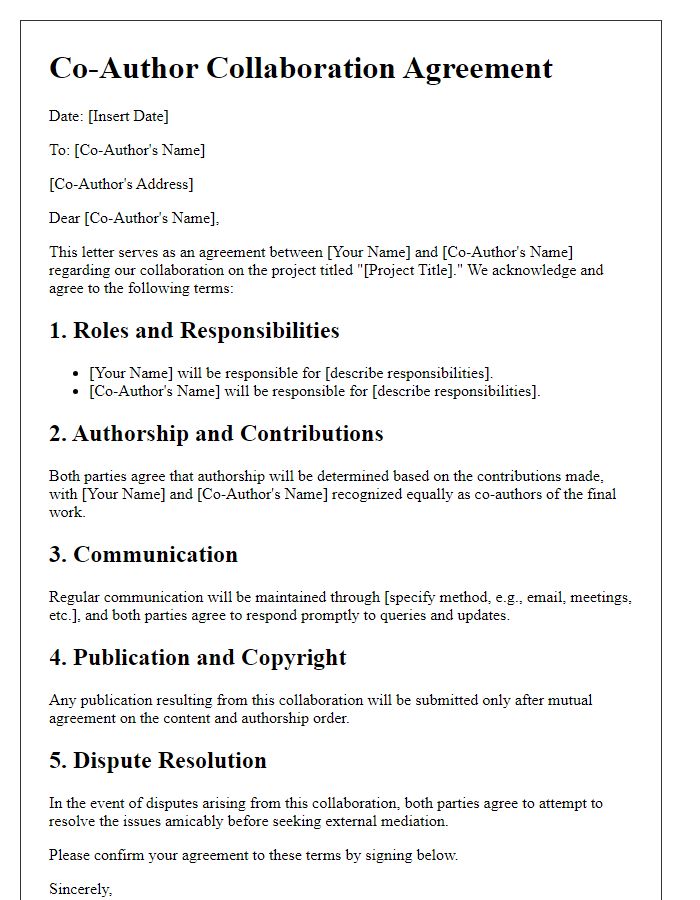
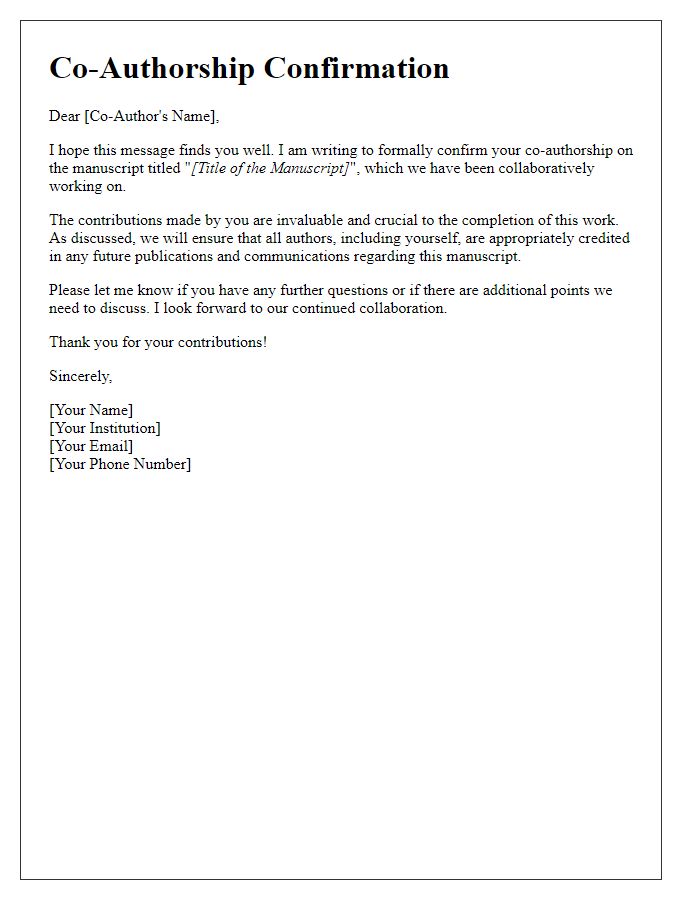
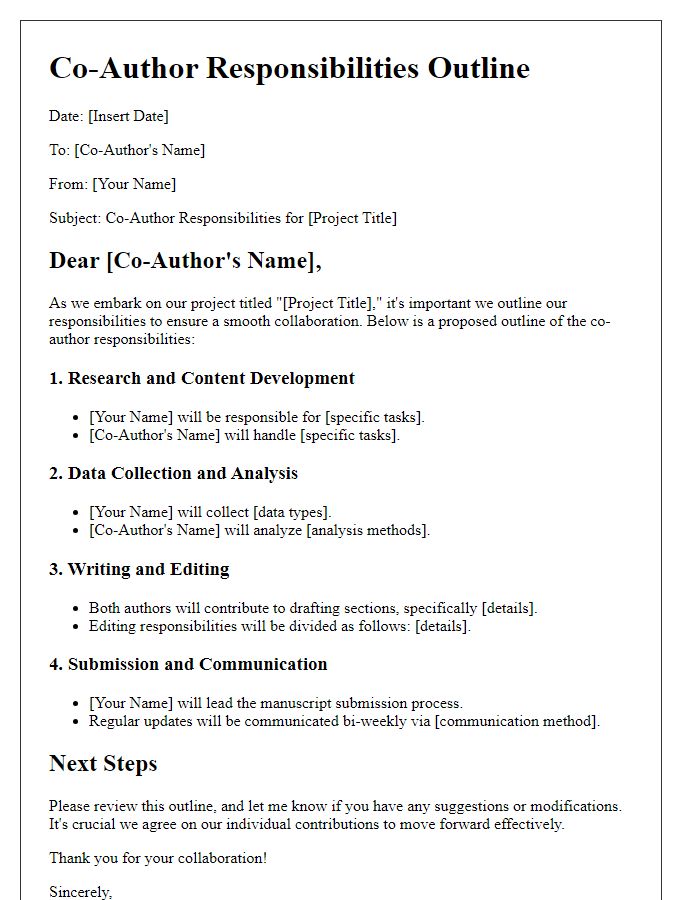
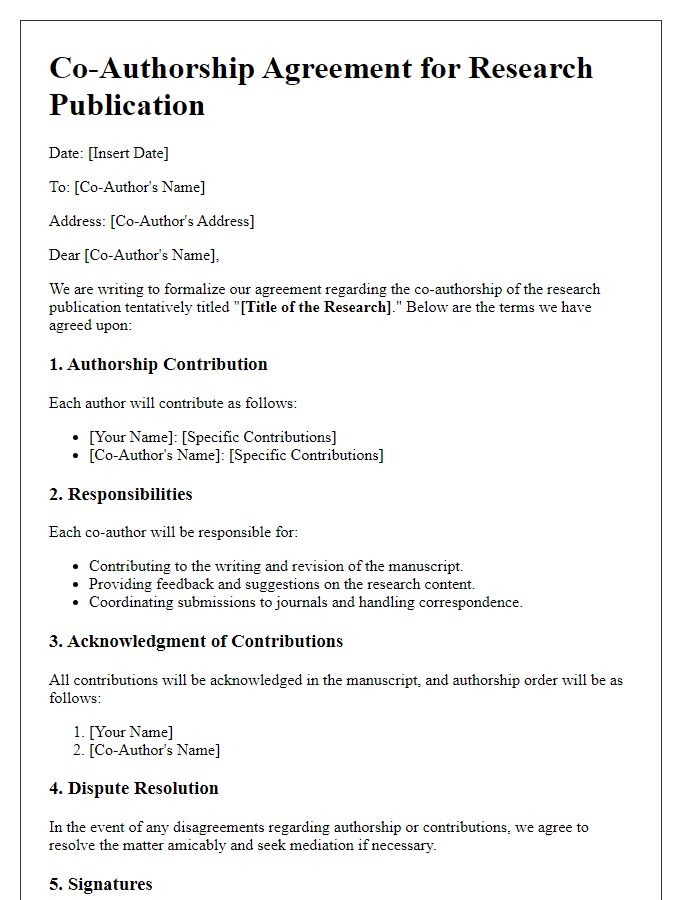
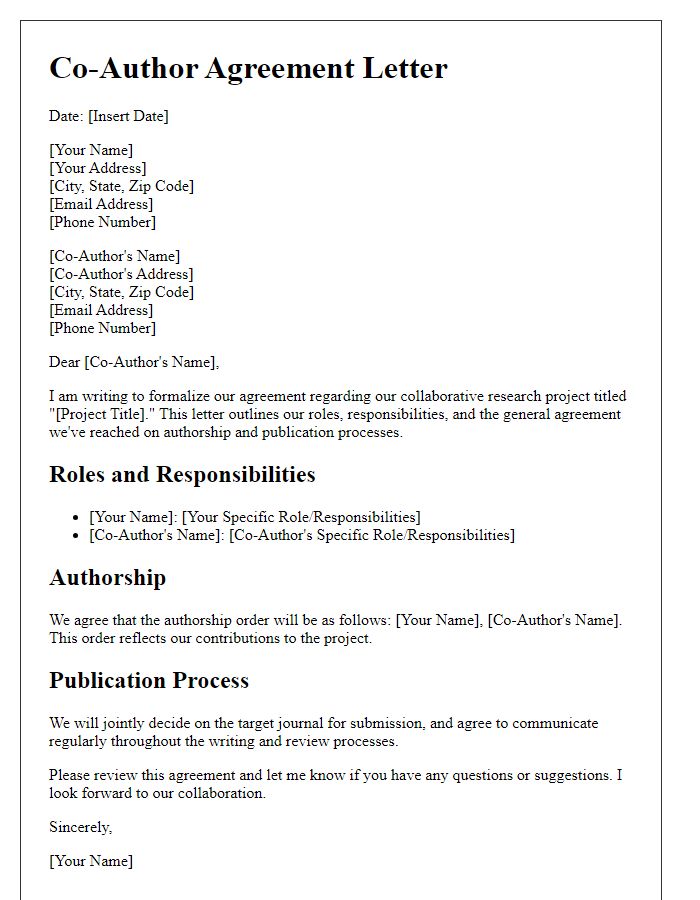
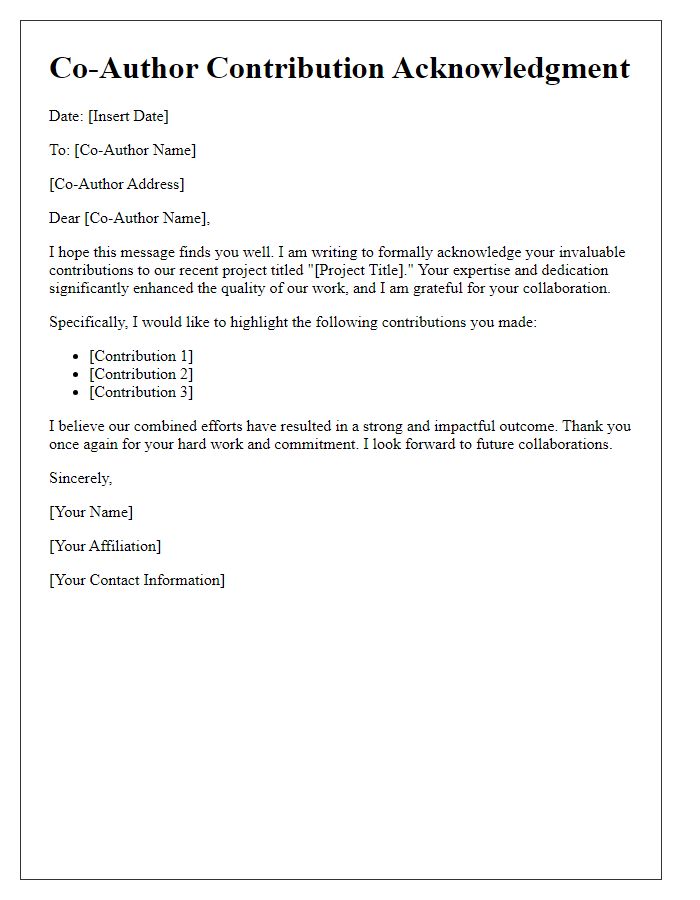
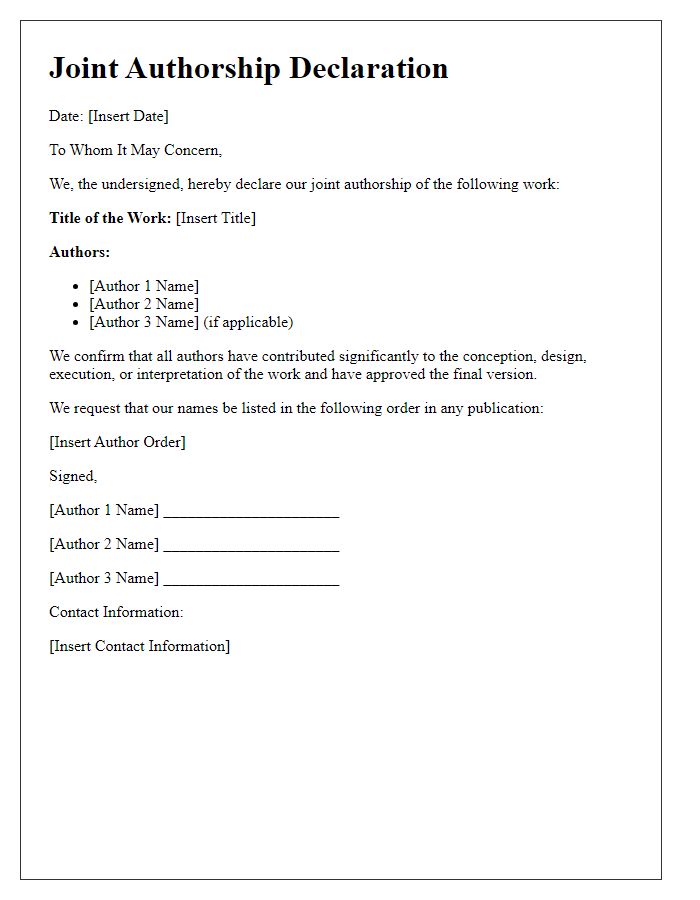
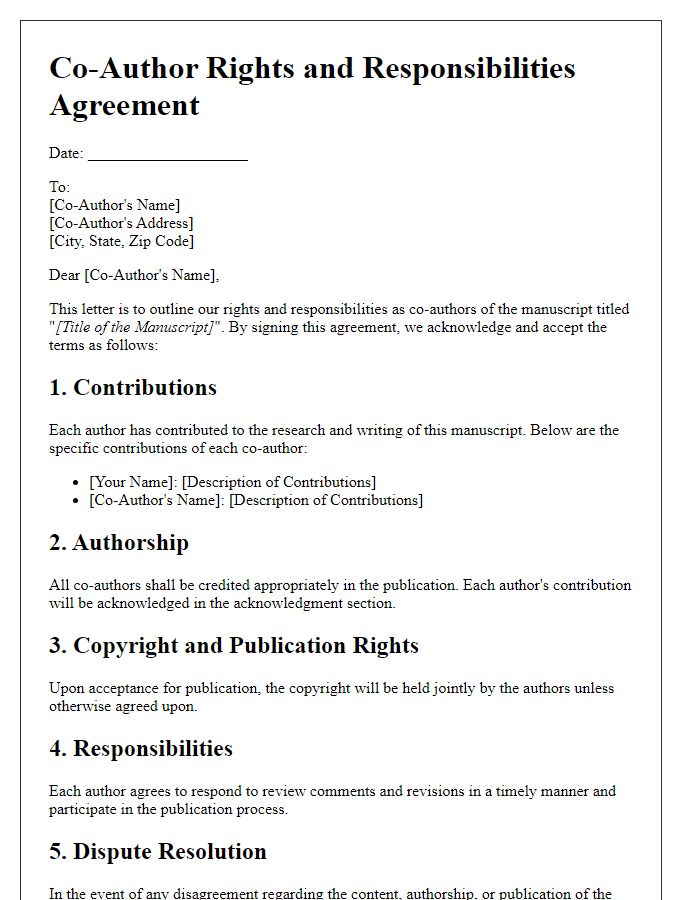
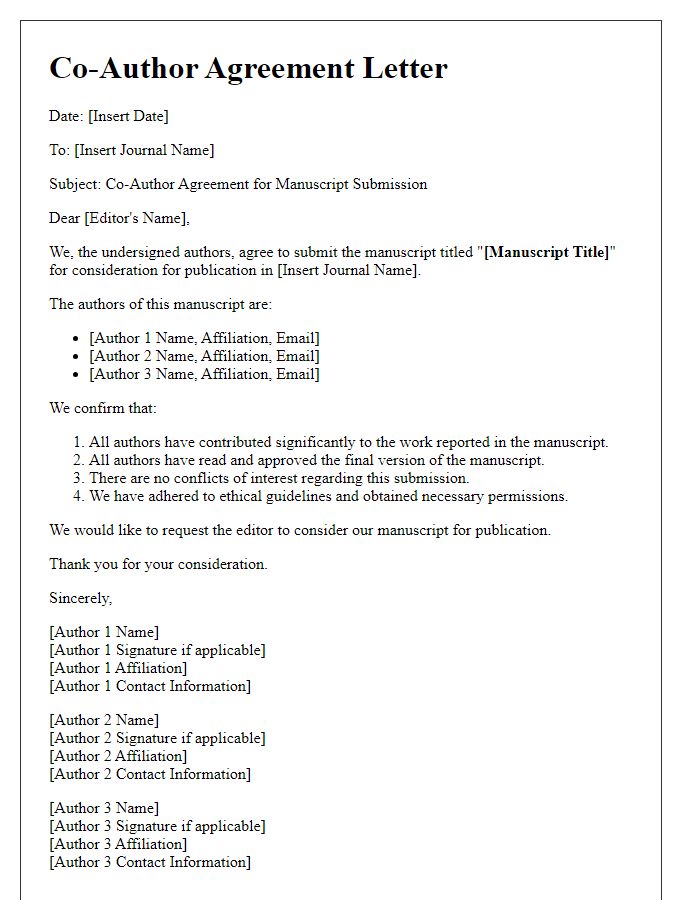
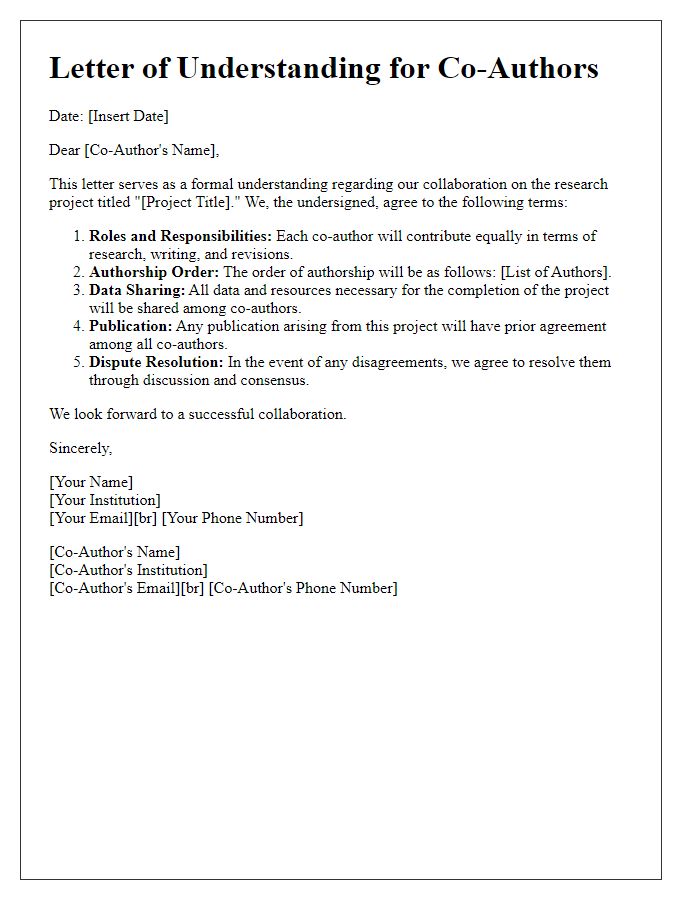


Comments